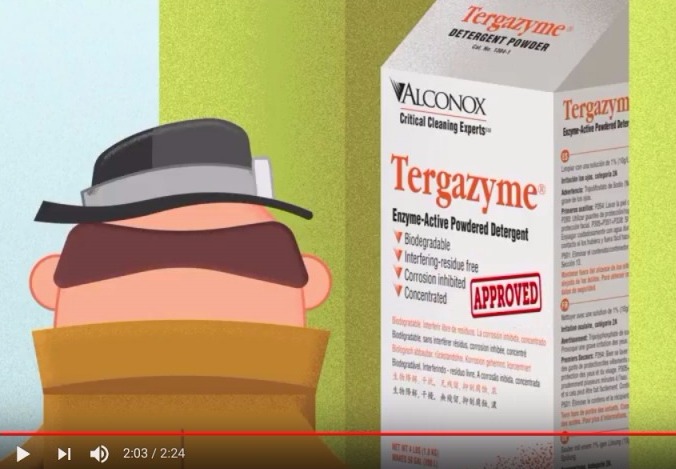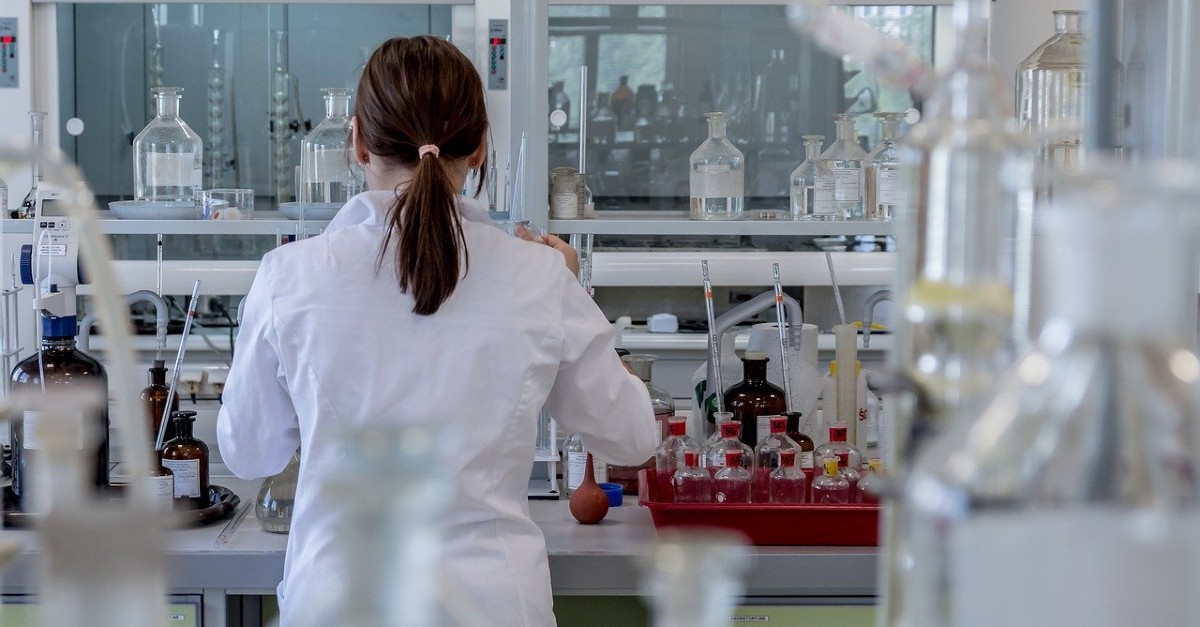How Does Tergazyme Enzyme Detergent Work?
Q: You recently sent a sample of Tergazyme detergent for a tough biologic cleaning challenge and it worked better than anything we had previously tried. I realize this must be due to the enzyme component. What information can you provide me on how enzyme detergents work, so I can share it with our decision makers / executives who want to better understand why this detergent got such different results?
Cleaning Blood off of Recording Electrodes
Q. I was planning on purchasing Tergazyme but was wondering if there might be reason to consider an additional second cleaning product for cleaning blood products, etc off recording electrodes and off of surgical instruments. Would this be redundant or offer any advantage?
A. Tergazyme alone is very effective at removing blood, tissue & other body fluids off of electrodes and surgical instruments. Learn More.
Video: Tergazyme Enzyme-Active Powdered Detergent by Alconox, Inc.
Video: Tergazyme® Enzyme Active Powdered Detergent is a concentrated, anionic detergent with a proteolytic enzyme for manual and ultrasonic cleaning. Excellent for organic and oily residues in addition to enhanced removal of proteinaceous soils, tissue, biofilms, blood and bodily fluids from glassware, metals, plastic, ceramic, porcelain, elastomers and fiberglass with no interfering residues.
Cleaning Proteins: pH and Temperature
We run our caustic cleaning at pH 10-10.5. However, the specifications say the nominal pH of a 1% Tergazyme solution is 9.5 Are we compromising cleaning proteins / enzyme performance by using the higher pH and running as part of a caustic cycle? Can we run it at 110F or should we be lower?
Pre-soak for Tough Residues in Medical Device Cleaning & Reprocessing
Q. We reprocess single use medical devices and we are having trouble getting organic and biological residue out of crevices. It is requiring cleaning for a much longer time than we can support in our processes. We’ve started to do pre-soaking as we read that this would help, but we’re a little concerned we are not doing that optimally either. Can you make recommendations?




